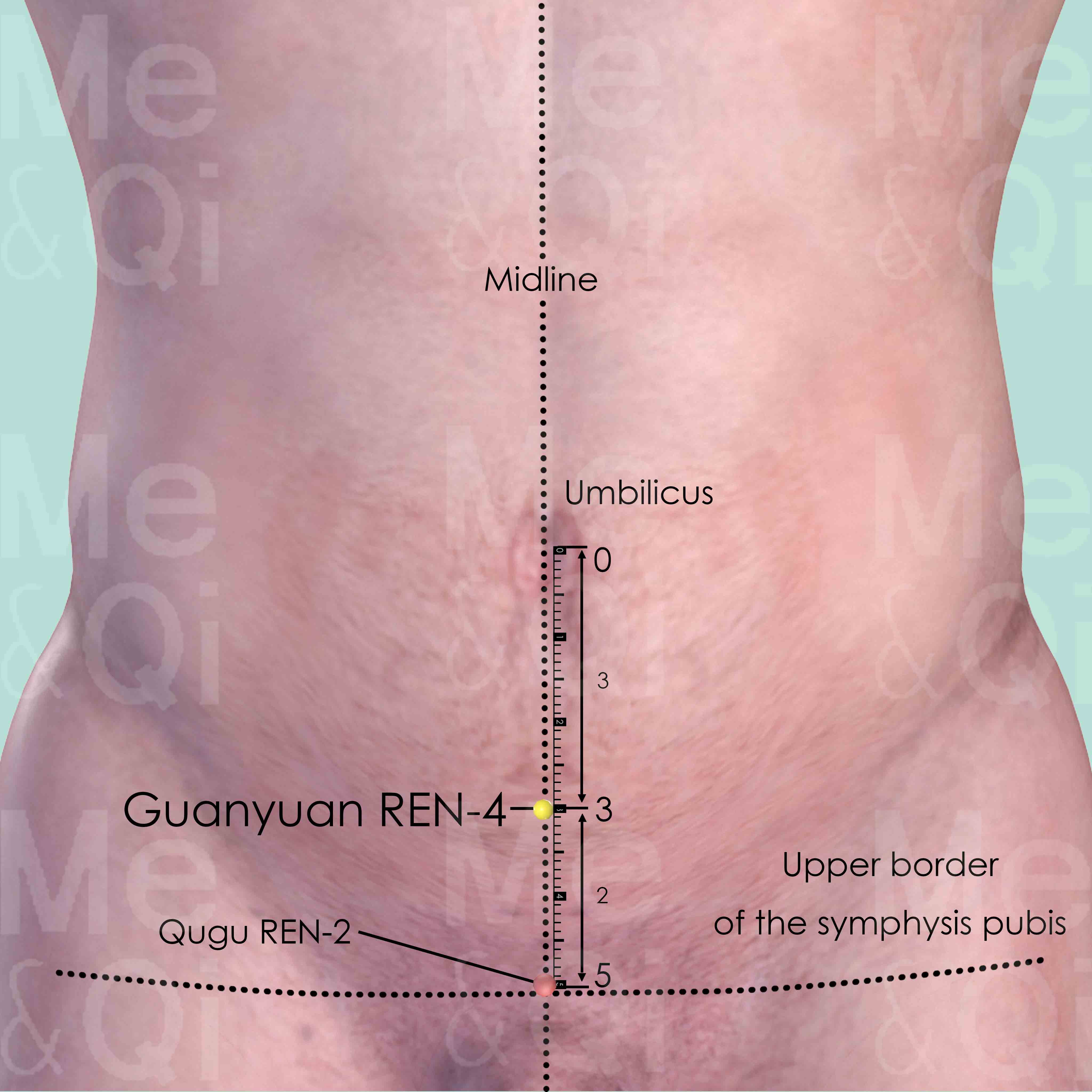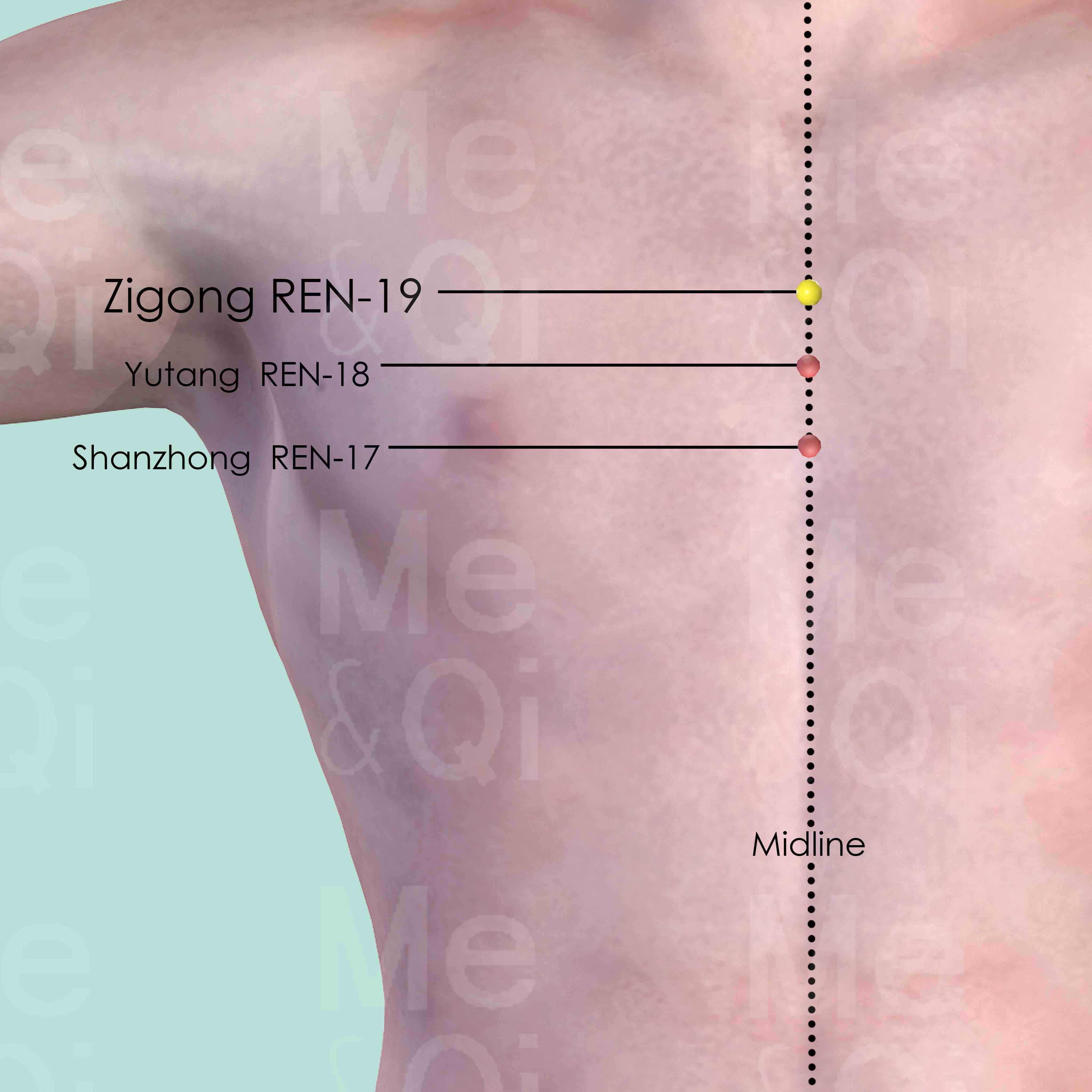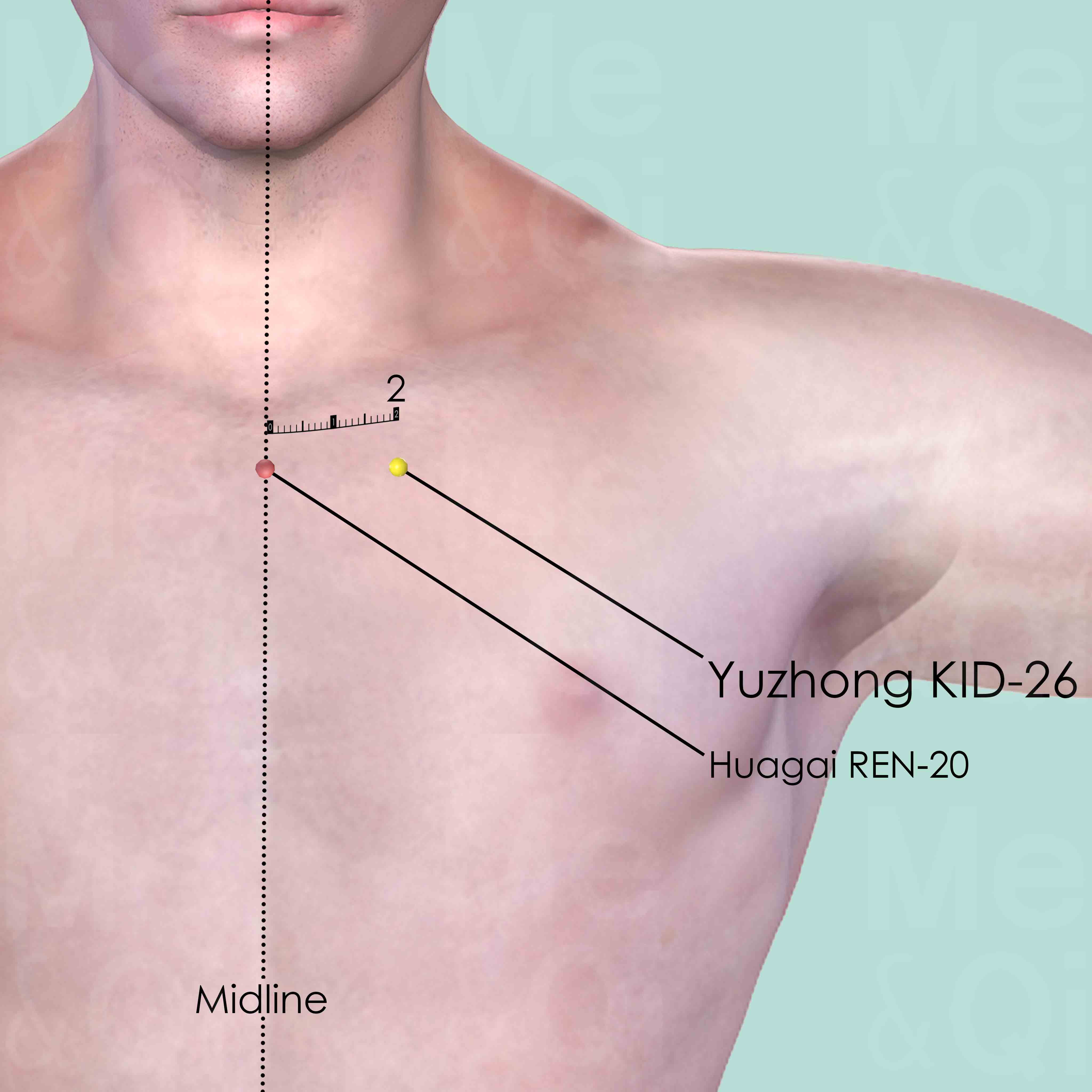Hemoptysisaccording to TCM
Symptom family: Respiratory Secretions
Did you mean? Bloody Sputum
Root Causes of Hemoptysis in TCM
Explore below more details about what might cause Hemoptysis according to TCM.
Heat
In TCM "Heat" signifies an excess of Yang energy, leading to an imbalance where heat predominates over the body's cool Yin aspects. This condition is metaphorically akin to an internal over-heating. Symptoms indicative of Heat can include feelings of warmth, fever, sweating, irritability, red face, thirst with a preference for cold drinks, and a rapid pulse. The tongue may appear red with a yellow coating. Unlike the common interpretation of heat in terms of temperature, in TCM, it represents a state of hyperactivity or inflammation in the body.... see more
Heat Patterns That Can Lead to Hemoptysis
Common Symptoms: Thirst Nosebleeds Irritability Flushed Face Vomiting Blood Dark Urine Dry Stools Bitter Taste In The Mouth
| Pattern Name | Relevant Symptoms | Relevant Formulas |
|---|---|---|
| Heat in the Blood | Cough of blood, Feeling hot, Red skin eruptions, Thirst, Frequent bleeding, Bloody sputum, Hematochezia, Hematuria, Vomiting blood, Hemoptysis, Nosebleeds, Excessive menstruation... see more | Xi Jiao Di Huang Tang | Gu Jing Wan | Shi Hui San | Bai He Di Huang Tang | Hua Ban Tang | Qing Ying Tang | Qing Re Gu Jing Tang |
| Wind Cold with Internal Heat | Coughing blood, Strong fever, Severe chills, Lack of sweating, Headaches, Feeling of heaviness, General sensation of tightness, Flushed face, Eye hyperemia, Dry nose, Thirst, Irritability, Insomnia, Hemoptysis, Mottled skin... see more | Shi Gao Tang |
| Liver Fire Blazing | Haemoptysis, Irritability, Anger, Tinnitus, Deafness, Temporal headache, Dizziness, Flushed face, Eye hyperemia, Thirst, Bitter taste in the mouth, Vivid dreaming, Constipation, Dry stools, Dark urine, Nosebleeds, Hemoptysis, Vomiting blood... see more | Long Dan Xie Gan Tang | Dang Gui Long Hui Wan | Xie Qing Wan |
| Liver Wind agitating Internally due to Liver Fire | Haemoptysis, Tremors, Irritability, Anger, Tinnitus, Deafness, Temporal headache, Dizziness, Flushed face, Eye hyperemia, Thirst, Bitter taste in the mouth, Vivid dreaming, Constipation, Dry stools, Dark urine, Nosebleeds, Vomiting blood, Hemoptysis... see more | Ling Jiao Gou Teng Tang | Zi Xue Dan | Feng Yin Tang |
Wind
In TCM "Wind" is a concept that represents a pattern of disharmony, often characterized by its sudden and unpredictable nature, much like a gusty wind changing direction without warning. This pattern is associated with symptoms that come and go quickly or move around the body, such as itching, tremors, or even certain types of pain. Wind is considered to be a primary cause of illnesses that have these rapidly changing characteristics. In TCM, external Wind often refers to illnesses that start suddenly, like the common cold, believed to be caused by external pathogenic factors like climatic changes. On the other hand, internal Wind can be linked to internal imbalances and can manifest in conditions like dizziness or spasms. ... see more
Wind Patterns That Can Lead to Hemoptysis
Common Symptoms: Flushed Face Eye Hyperemia Thirst Irritability Nosebleeds Strong Fever Severe Chills Lack Of Sweating
| Pattern Name | Relevant Symptoms | Relevant Formulas |
|---|---|---|
| Wind Cold with Internal Heat | Coughing blood, Strong fever, Severe chills, Lack of sweating, Headaches, Feeling of heaviness, General sensation of tightness, Flushed face, Eye hyperemia, Dry nose, Thirst, Irritability, Insomnia, Hemoptysis, Mottled skin... see more | Shi Gao Tang |
| Liver Wind agitating Internally due to Liver Fire | Haemoptysis, Tremors, Irritability, Anger, Tinnitus, Deafness, Temporal headache, Dizziness, Flushed face, Eye hyperemia, Thirst, Bitter taste in the mouth, Vivid dreaming, Constipation, Dry stools, Dark urine, Nosebleeds, Vomiting blood, Hemoptysis... see more | Ling Jiao Gou Teng Tang | Zi Xue Dan | Feng Yin Tang |
Yin Deficiency
Yin deficiency in TCM is a pattern of disharmony characterized by a depletion of the body's Yin energy, which represents the cooling, moistening, and nurturing aspects of our physiology. This condition often arises from factors like chronic stress, overwork, insufficient rest, or prolonged illness. Symptoms of Yin deficiency can include a sensation of heat, especially in the afternoon or evening, night sweats, insomnia, a dry mouth or throat, and a red tongue with little coating. There might also be a general feeling of restlessness or irritability. Since Yin is essential for balancing the body's active and warm Yang energy, its deficiency leads to a relative excess of Yang, manifesting as heat or dryness symptoms.... see more
Yin Deficiency Patterns That Can Lead to Hemoptysis
| Pattern Name | Relevant Symptoms | Relevant Formulas |
|---|---|---|
| Lung Yin Deficiency | Blood spit, Hoarse voice, Itchy throat, Reluctance to speak, Thin chest | Bai He Gu Jin Tang |
Blood Deficiency
Blood Deficiency in TCM is like when your body's tank runs low on the vital energy that blood provides. It's not exactly the same as anemia in modern medicine, which is about having too few red blood cells. Instead, Blood Deficiency in TCM is about your body not having enough of the life-giving qualities that blood brings, like nourishment and moisture. This can make you feel tired, look pale, and even feel dizzy or have blurry vision. It's like a garden not getting enough water to stay lush and vibrant. TCM sees this as an imbalance where the body isn't being nourished as it should be, impacting overall health and well-being.... see more
Blood Deficiency Patterns That Can Lead to Hemoptysis
| Pattern Name | Relevant Symptoms | Relevant Formulas |
|---|---|---|
| Loss of Blood | Cough of blood, Nosebleeds, Uterine hemorrhage, Hematuria, Hematochezia, Hemoptysis, Vomiting blood, Dark menstrual clots, Excessive menstruation, Bloody sputum... see more | Xi Jiao Di Huang Tang |
Cold
In TCM "Cold" as a pattern of disharmony refers to a specific type of imbalance within the body's systems, often linked to a deficiency or weakness. It's not about feeling physically cold or having a common cold, but rather a metaphorical description of certain symptoms and underlying conditions. When a TCM practitioner says someone suffers from "Cold," it usually implies that the body's Yang energy, which is warm and active, is insufficient or overpowered by Yin energy, which is cool and passive. Symptoms of Cold in TCM can include a general feeling of coldness, cold limbs, pale complexion, low energy, slow metabolism, and a preference for warmth. ... see more
Cold Patterns That Can Lead to Hemoptysis
| Pattern Name | Relevant Symptoms | Relevant Formulas |
|---|---|---|
| Wind Cold with Internal Heat | Coughing blood, Strong fever, Severe chills, Lack of sweating, Headaches, Feeling of heaviness, General sensation of tightness, Flushed face, Eye hyperemia, Dry nose, Thirst, Irritability, Insomnia, Hemoptysis, Mottled skin... see more | Shi Gao Tang |
Liver
In TCM the Liver is viewed as the organ responsible for the smooth flow of Qi, Blood, and emotions throughout the body. It plays a key role in regulating mood, storing blood, supporting digestion, and ensuring the health of tendons and eyes. When the Liver malfunctions or is imbalanced in TCM, it can lead to a range of issues such as irritability, mood swings, menstrual irregularities, eye problems, and muscular stiffness or pain. A malfunctioning Liver in TCM reflects not only physical disturbances but also emotional and mental disharmony, emphasizing the holistic approach of TCM in addressing health and wellness.... see more
Liver Patterns That Can Lead to Hemoptysis
Common Symptoms: Irritability Anger Tinnitus Deafness Temporal Headache Dizziness Flushed Face Eye Hyperemia
| Pattern Name | Relevant Symptoms | Relevant Formulas |
|---|---|---|
| Liver Fire Blazing | Haemoptysis, Irritability, Anger, Tinnitus, Deafness, Temporal headache, Dizziness, Flushed face, Eye hyperemia, Thirst, Bitter taste in the mouth, Vivid dreaming, Constipation, Dry stools, Dark urine, Nosebleeds, Hemoptysis, Vomiting blood... see more | Long Dan Xie Gan Tang | Dang Gui Long Hui Wan | Xie Qing Wan |
| Liver Wind agitating Internally due to Liver Fire | Haemoptysis, Tremors, Irritability, Anger, Tinnitus, Deafness, Temporal headache, Dizziness, Flushed face, Eye hyperemia, Thirst, Bitter taste in the mouth, Vivid dreaming, Constipation, Dry stools, Dark urine, Nosebleeds, Vomiting blood, Hemoptysis... see more | Ling Jiao Gou Teng Tang | Zi Xue Dan | Feng Yin Tang |
Lung
In TCM the Lungs are seen as the organ responsible for controlling Qi and respiration, as well as being a key part of the body's defensive system. They are thought to maintain the balance and flow of air and moisture, and are closely linked to the skin and hair. When the Lungs are imbalanced or malfunctioning in TCM, it can lead to respiratory issues like coughing or asthma, a weakened immune system, dry skin, and emotional disturbances such as sadness or grief. These symptoms are believed to arise from disruptions in the Lungs' ability to regulate Qi and protect the body, highlighting their central role in maintaining overall health and well-being.... see more
Lung Patterns That Can Lead to Hemoptysis
| Pattern Name | Relevant Symptoms | Relevant Formulas |
|---|---|---|
| Lung Yin Deficiency | Blood spit, Hoarse voice, Itchy throat, Reluctance to speak, Thin chest | Bai He Gu Jin Tang |
TCM Herbal Formulas for Hemoptysis
Explore below some TCM herbal formulas used to address hemoptysis, organized by cause and by formula type.
- By Cause
- By Formula Type
- Heat
- Wind
- Yin Deficiency
- Blood Deficiency
- Cold
- View More Causes
- Formulas that clear heat from the organs
- Formulas that clear nutritive-level heat
- Formulas that clear heat from deficiency
- Formulas that nourish yin and tonify
- Formulas that secure irregular uterine bleeding and stop vaginal discharge
- Formulas that stop bleeding
- Formulas that clear heat from qi and blood
- Formulas that release the exterior and clear the interior
- Formulas that pacify and extinguish internal wind
- Formulas that clear heat and open sensory orifices
- Formulas that dredge and disperse external wind
Top Formula for Heat:
Xi Jiao Di Huang Tang
Suitable for Heat patterns that may cause hemoptysis, such as Heat in the Blood
Learn moreAll Formulas Recommended for Hemoptysis Caused by Heat
| Formula | Patterns Suitable For |
|---|---|
| Xi Jiao Di Huang Tang | Heat in the Blood |
| Gu Jing Wan | Heat in the Blood |
| Shi Hui San | Heat in the Blood |
| Bai He Di Huang Tang | Heat in the Blood |
| Hua Ban Tang | Heat in the Blood |
| Qing Ying Tang | Heat in the Blood |
| Qing Re Gu Jing Tang | Heat in the Blood |
| Shi Gao Tang | Wind Cold with Internal Heat |
| Long Dan Xie Gan Tang | Liver Fire Blazing |
| Dang Gui Long Hui Wan | Liver Fire Blazing |
| Xie Qing Wan | Liver Fire Blazing |
| Ling Jiao Gou Teng Tang | Liver Wind agitating Internally due to Liver Fire |
| Zi Xue Dan | Liver Wind agitating Internally due to Liver Fire |
| Feng Yin Tang | Liver Wind agitating Internally due to Liver Fire |
Top Formula for Wind:
Shi Gao Tang
Suitable for Wind patterns that may cause hemoptysis, such as Wind Cold with Internal Heat
Learn moreAll Formulas Recommended for Hemoptysis Caused by Wind
| Formula | Patterns Suitable For |
|---|---|
| Shi Gao Tang | Wind Cold with Internal Heat |
| Ling Jiao Gou Teng Tang | Liver Wind agitating Internally due to Liver Fire |
| Zi Xue Dan | Liver Wind agitating Internally due to Liver Fire |
| Feng Yin Tang | Liver Wind agitating Internally due to Liver Fire |
Top Formula for Yin Deficiency:
Bai He Gu Jin Tang
Suitable for Yin Deficiency patterns that may cause hemoptysis, such as Lung Yin Deficiency
Learn moreTop Formula for Blood Deficiency:
Xi Jiao Di Huang Tang
Suitable for Blood Deficiency patterns that may cause hemoptysis, such as Loss of Blood
Learn moreTop Formula for Cold:
Shi Gao Tang
Suitable for Cold patterns that may cause hemoptysis, such as Wind Cold with Internal Heat
Learn moreFormulas that clear nutritive-level Heat
These formulas are suitable for some hemoptysis-causing patterns like Heat in the Blood or Loss of Blood.
One such formula is Xi Jiao Di Huang Tang, with water buffalo horn as a key herb.
Other formulas of this category are listed in the table below.
All "formulas that clear nutritive-level heat" recommended for hemoptysis
| Formula | Patterns Suitable For (if applicable) |
|---|---|
| Xi Jiao Di Huang Tang | Heat in the Blood, Loss of Blood |
| Qing Ying Tang | Heat in the Blood |
Formulas that clear Heat from the Organs
These formulas are suitable for some hemoptysis-causing patterns like Liver Fire Blazing.
One such formula is Long Dan Xie Gan Tang, with chinese gentian as a key herb.
Other formulas of this category are listed in the table below.
All "formulas that clear heat from the organs" recommended for hemoptysis
| Formula | Patterns Suitable For (if applicable) |
|---|---|
| Long Dan Xie Gan Tang | Liver Fire Blazing |
| Dang Gui Long Hui Wan | Liver Fire Blazing |
| Xie Qing Wan | Liver Fire Blazing |
Formulas that clear Heat from Deficiency
These formulas are suitable for some hemoptysis-causing patterns like Heat in the Blood.
One such formula is Bai He Di Huang Tang, with lily bulb as a key herb.
Other formulas of this category are listed in the table below.
All "formulas that clear heat from deficiency" recommended for hemoptysis
| Formula | Patterns Suitable For (if applicable) |
|---|---|
| Bai He Di Huang Tang | Heat in the Blood |
| Qing Re Gu Jing Tang | Heat in the Blood |
Formulas that nourish Yin and tonify
These formulas are suitable for some hemoptysis-causing patterns like Lung Yin Deficiency.
One such formula is Bai He Gu Jin Tang, with lily bulb as a key herb.
Formulas that secure irregular uterine bleeding and stop vaginal discharge
These formulas are suitable for some hemoptysis-causing patterns like Heat in the Blood.
One such formula is Gu Jing Wan, with tortoise plastron as a key herb.
Formulas that stop bleeding
These formulas are suitable for some hemoptysis-causing patterns like Heat in the Blood.
One such formula is Shi Hui San, with japanese thistle as a key herb.
Formulas that clear Heat from Qi and Blood
These formulas are suitable for some hemoptysis-causing patterns like Heat in the Blood.
One such formula is Hua Ban Tang, with gypsum as a key herb.
Formulas that Release the Exterior and Clear the Interior
These formulas are suitable for some hemoptysis-causing patterns like Wind Cold with Internal Heat.
One such formula is Shi Gao Tang, with gypsum as a key herb.
Formulas that pacify and extinguish Internal Wind
These formulas are suitable for some hemoptysis-causing patterns like Liver Wind agitating Internally due to Liver Fire.
One such formula is Ling Jiao Gou Teng Tang, with saiga antelope's horns as a key herb.
Formulas that clear Heat and open sensory orifices
These formulas are suitable for some hemoptysis-causing patterns like Liver Wind agitating Internally due to Liver Fire.
One such formula is Zi Xue Dan, with water buffalo horn as a key herb.
Formulas that dredge and disperse External Wind
These formulas are suitable for some hemoptysis-causing patterns like Liver Wind agitating Internally due to Liver Fire.
One such formula is Feng Yin Tang, with dragon bones as a key herb.
Acupoints for Hemoptysis
Explore below some acupoints used to address hemoptysis, organized by meridian.
- By Meridian
- Bladder Channel
- Pericardium Channel
- Directing Vessel
- Lung Channel
- Gall Bladder Channel
- Small Intestine Channel
- Kidney Channel
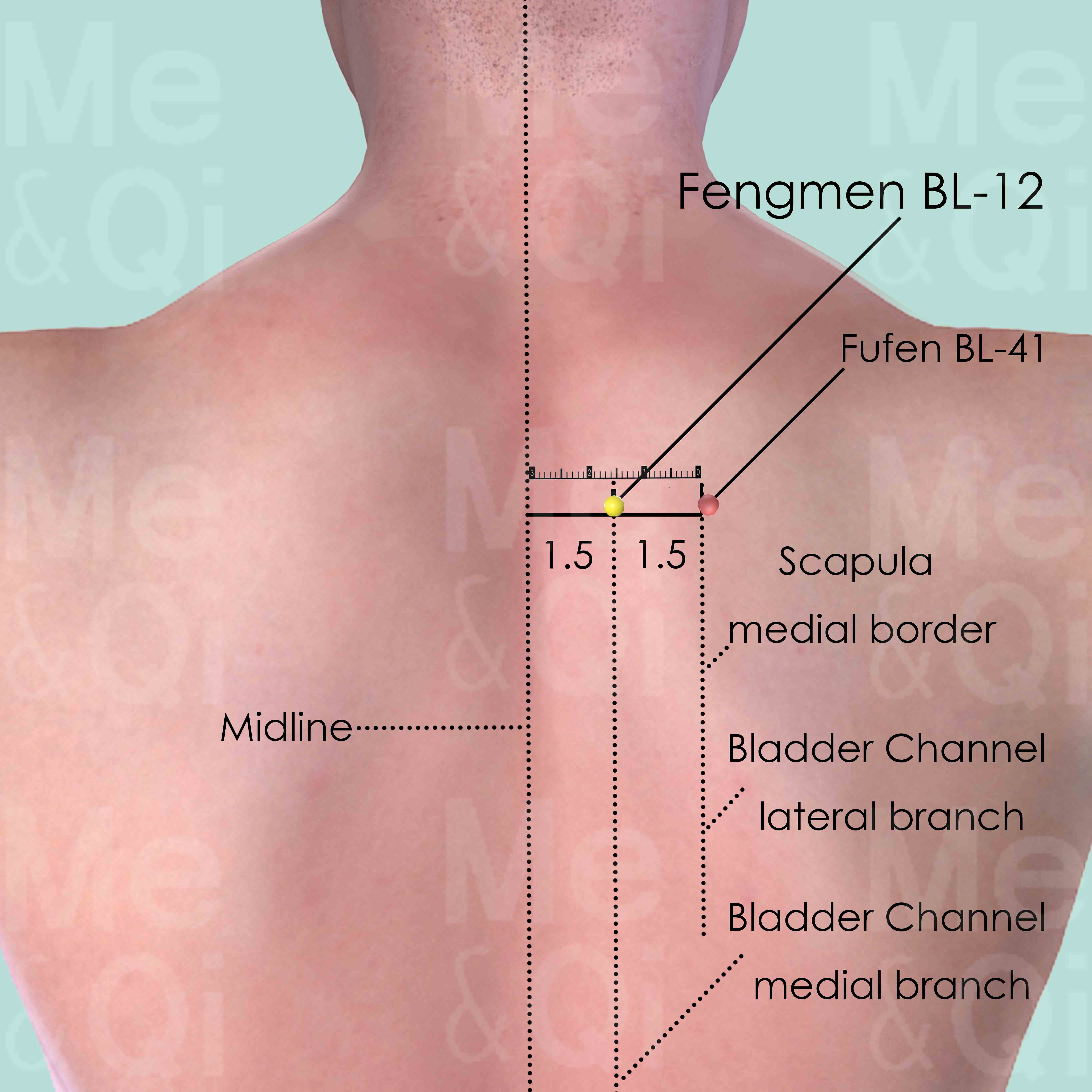
Fengmen BL-12
1.5 cun lateral to the lower border of the spinous process of the 2nd thoracic vertebra (T2).
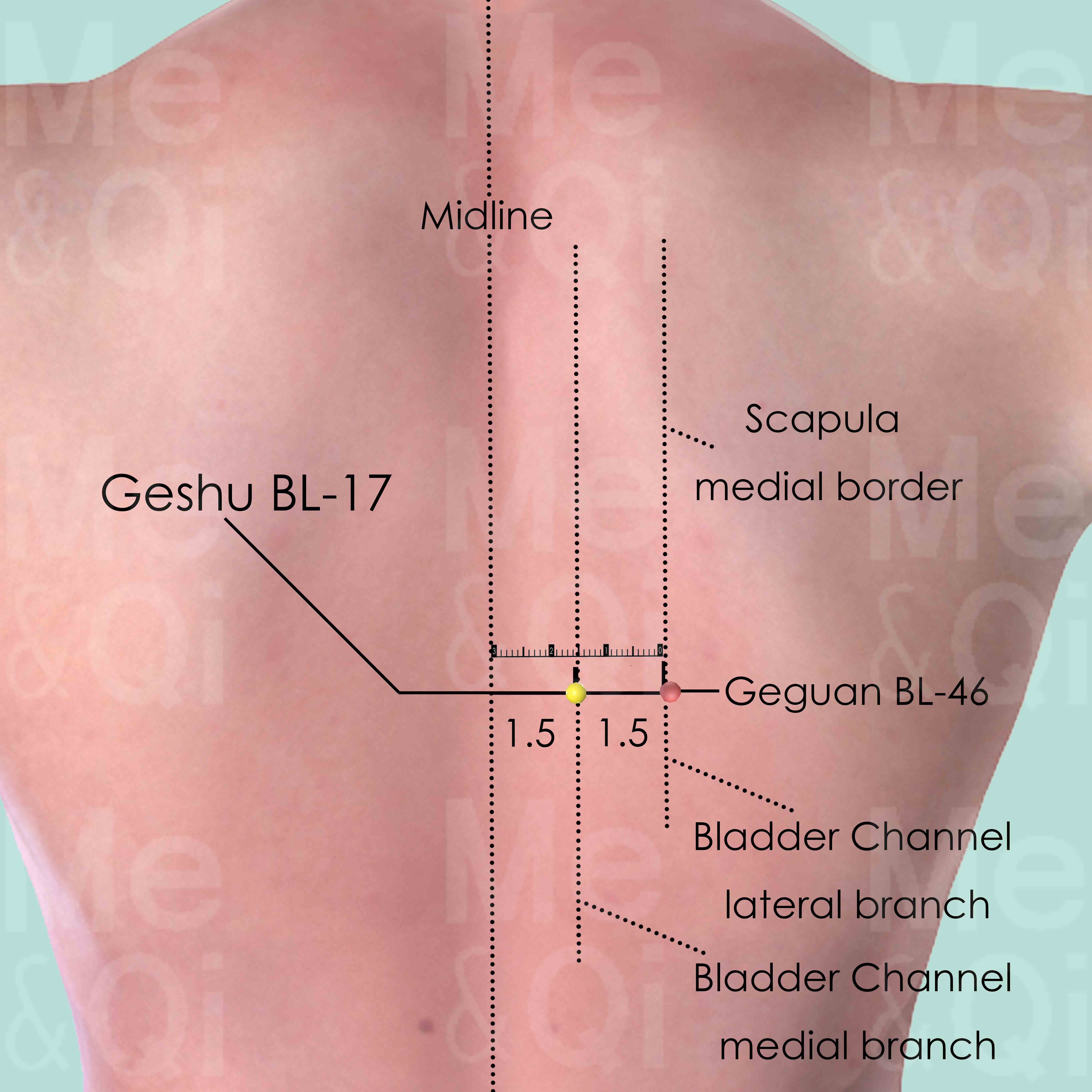
Geshu BL-17
1.5 cun lateral to the lower border of the spinous process of the 7th thoracic vertebra (T7).
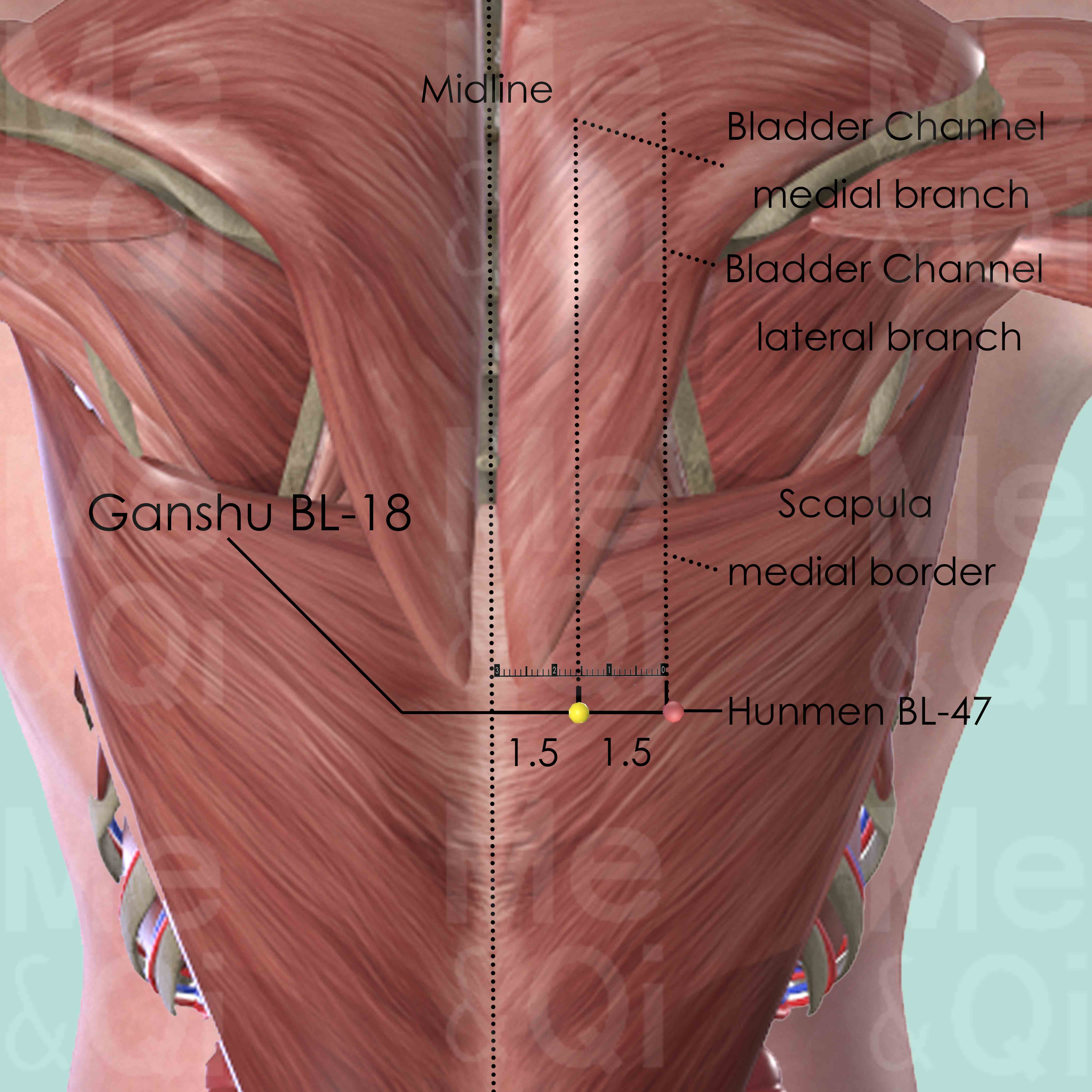
Ganshu BL-18
1.5 cun lateral to the lower border of the spinous process of the 9th thoracic vertebra (T9).
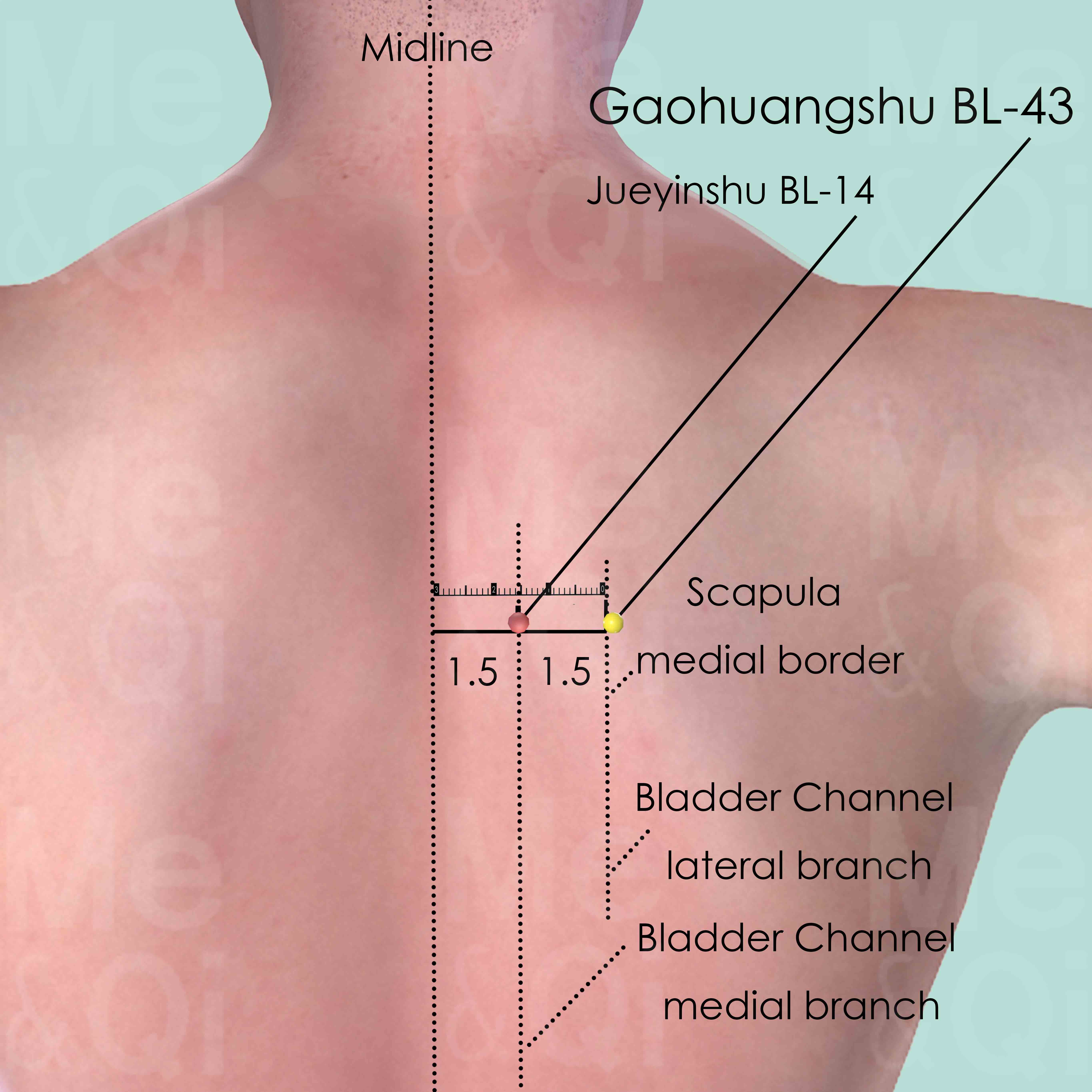
Gaohuangshu BL-43
3 cun (about 4 finger-breadths) lateral to the lower border of the spinous process of the 4th thoracic vertebra (T4).
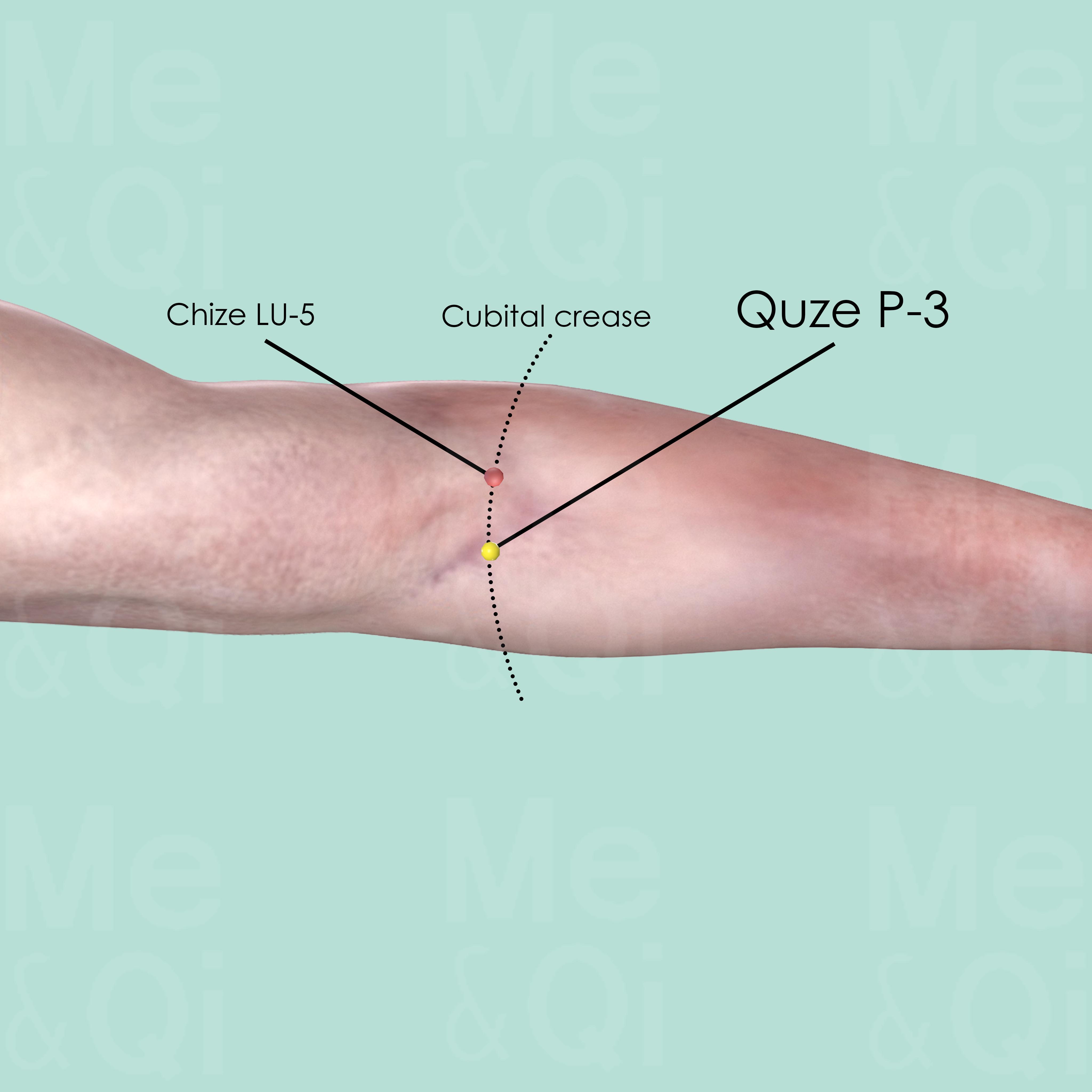
Quze P-3
On the transverse cubital crease, at the ulnar side of the tendon of biceps brachii muscle.
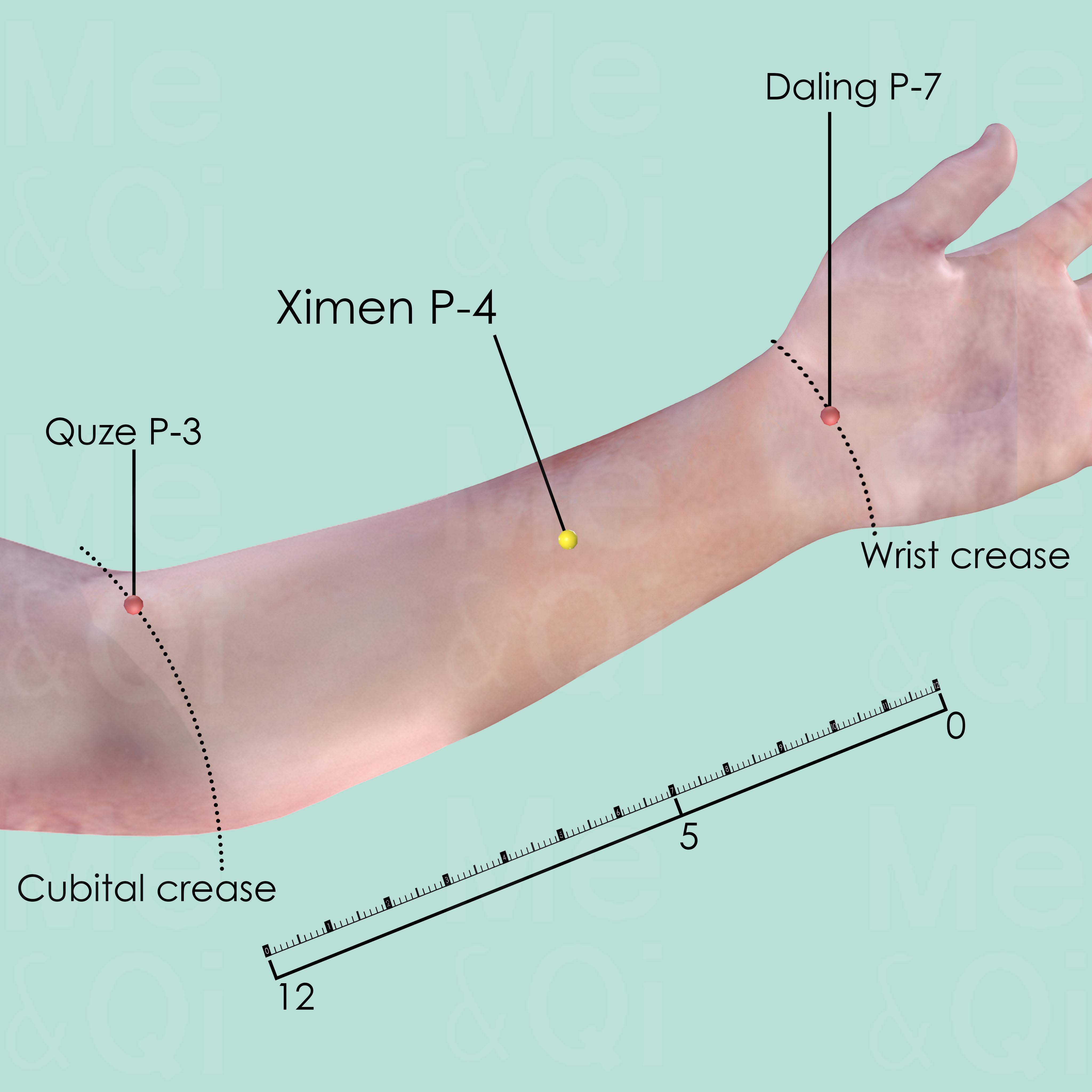
Ximen P-4
5 cun above the transverse crease of the wrist, on the line connecting Quze P-3 and Daling P-7, between the tendons of palmaris longus and flexor carpi radialis muscles.
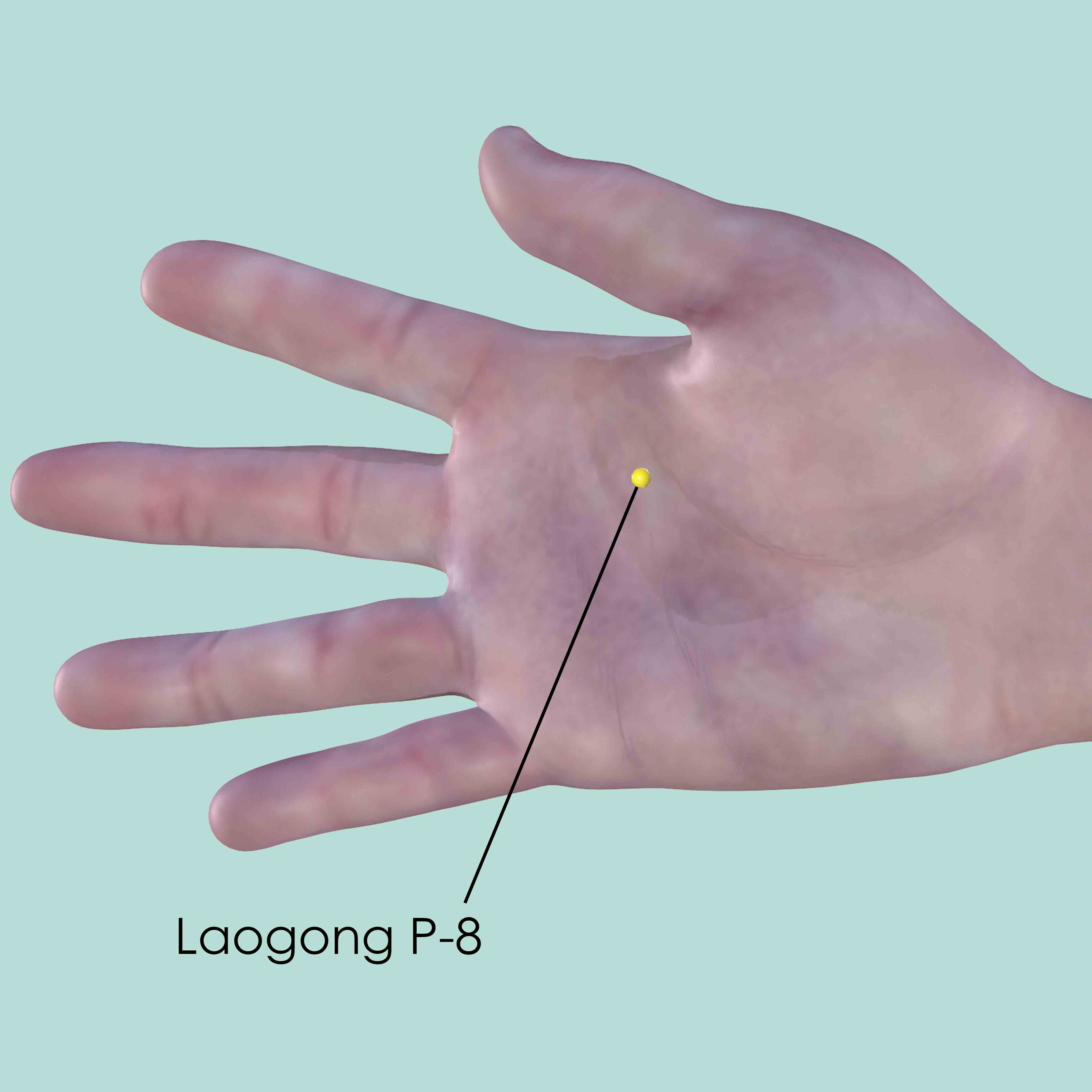
Laogong P-8
In the center of the palm, between the 2nd and the 3rd metacarpal bones, proximal to the metacarpophalangeal joint.
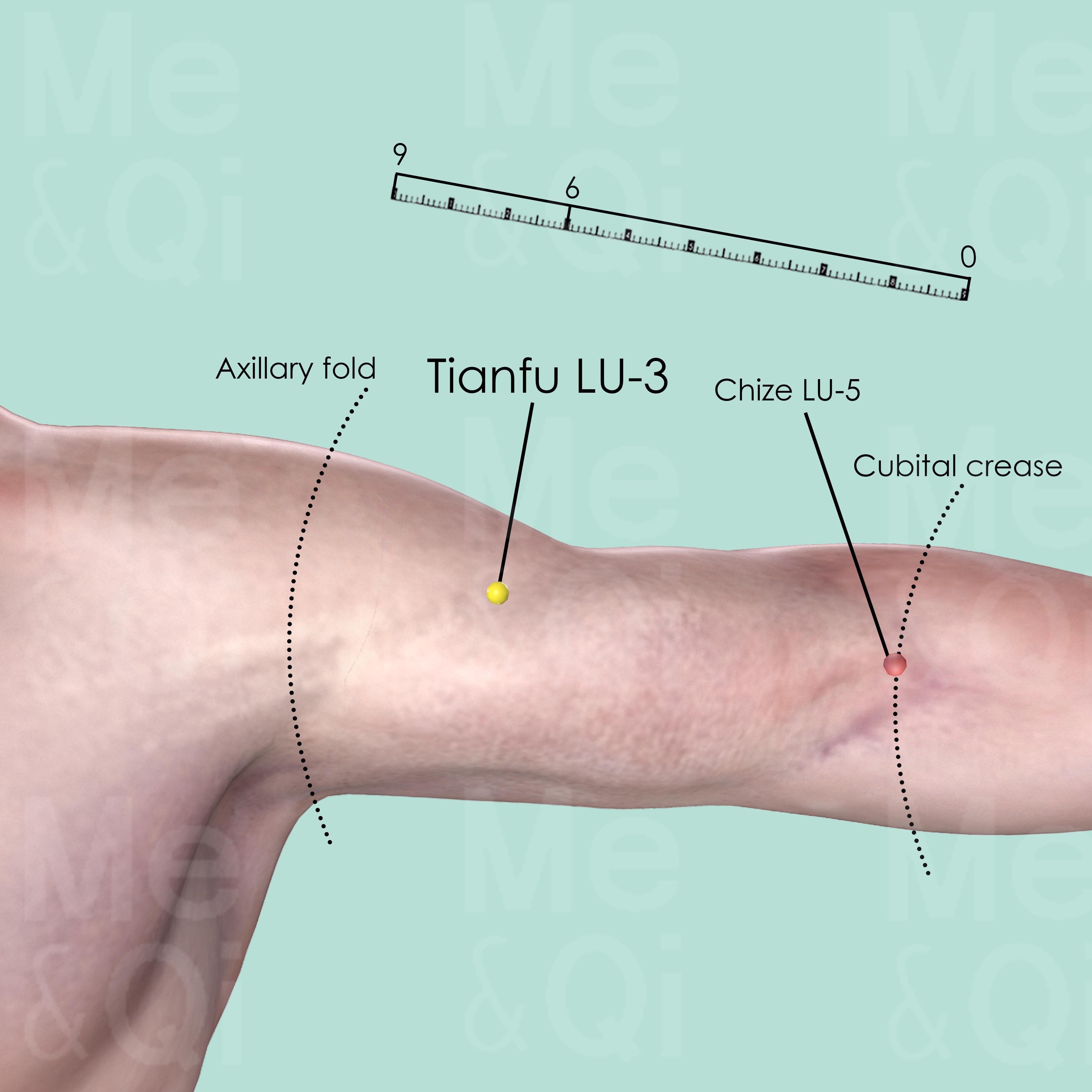
Tianfu LU-3
On the medial aspect of the upper arm, 3 cun below the end of the axillary fold and 6 cun above Chize LU-5, in the depression on the lateral border of biceps muscle.
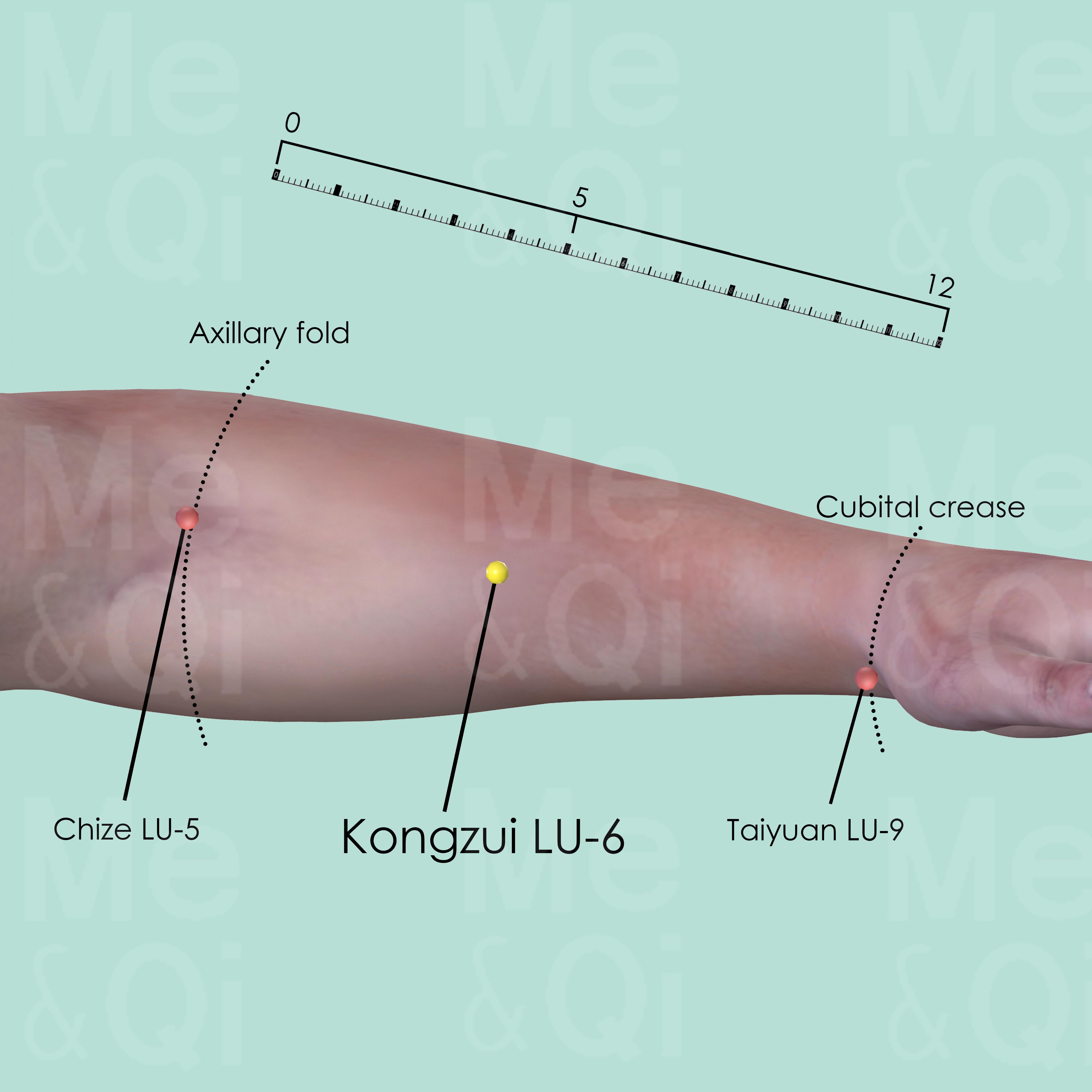
Kongzui LU-6
On the palmar aspect of the forearm, on the line joining Taiyuan LU-9 and Chize LU-5, 7 cun above Taiyuan LU-9.
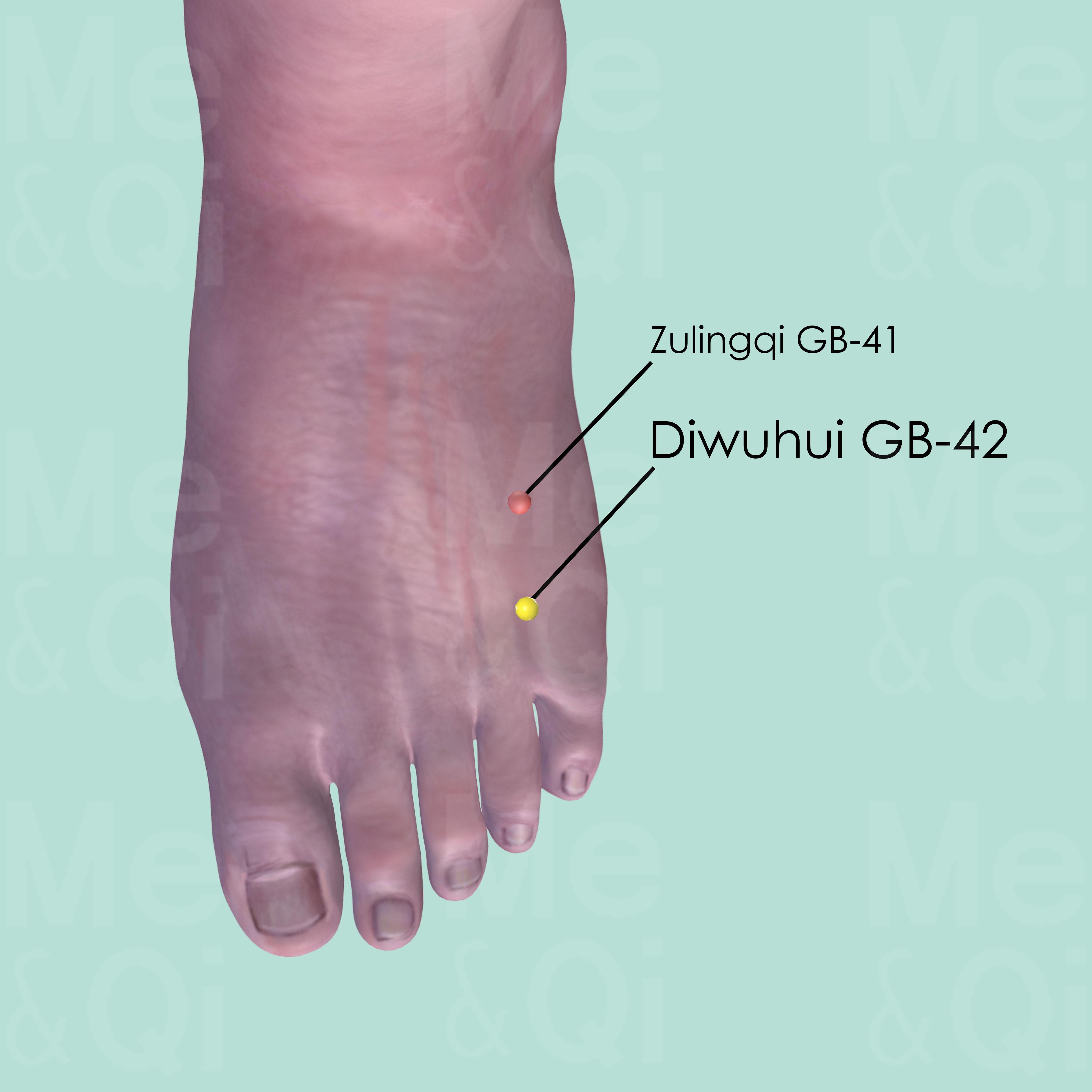
Diwuhui GB-42
Between the 4th and 5th metatarsal bones, on the medial side of the tendon of extensor digitorum longus muscle of the little toe.
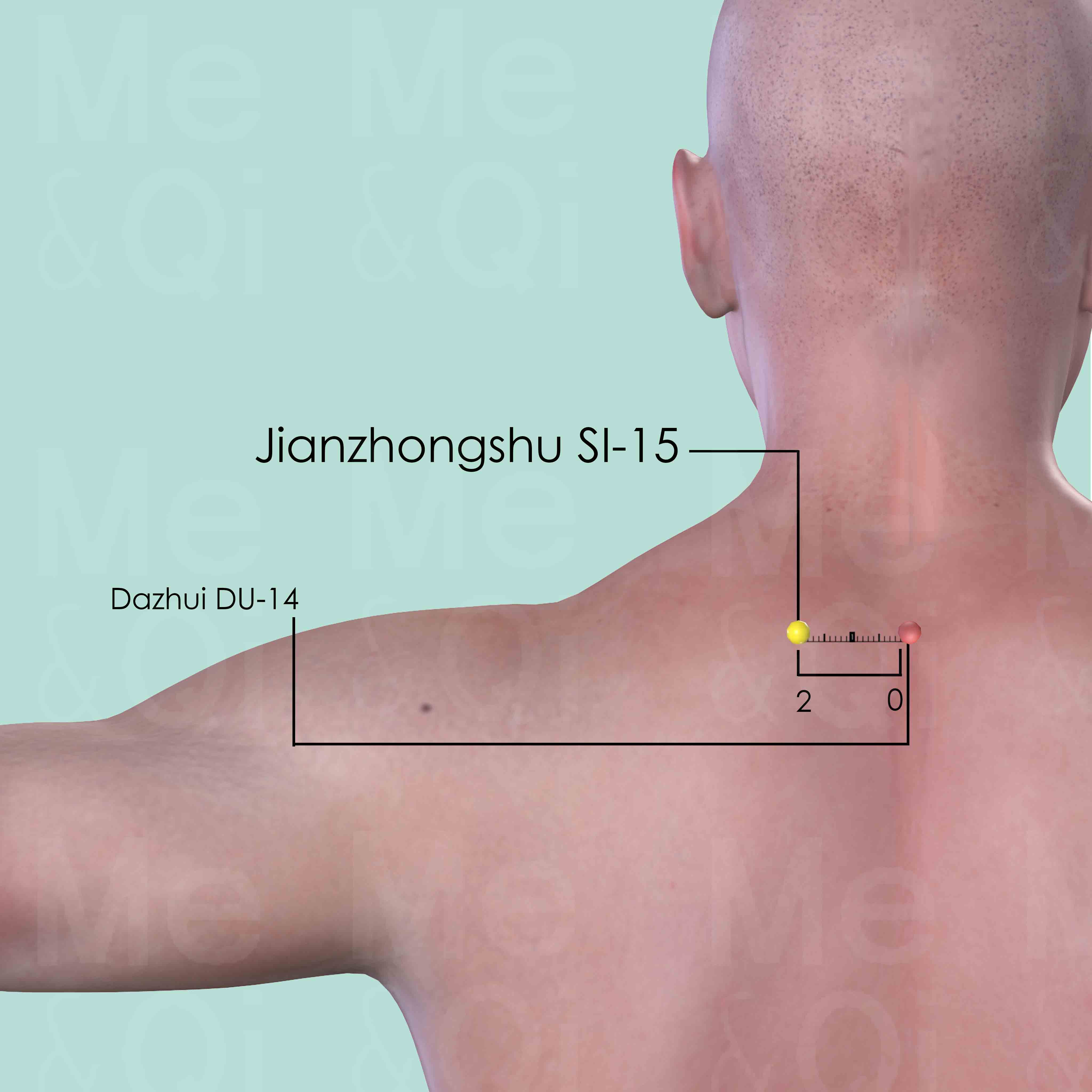
Jianzhongshu SI-15
2 cun lateral to the lower border of the spinous process of the 7th cervical vertebra (C7).

